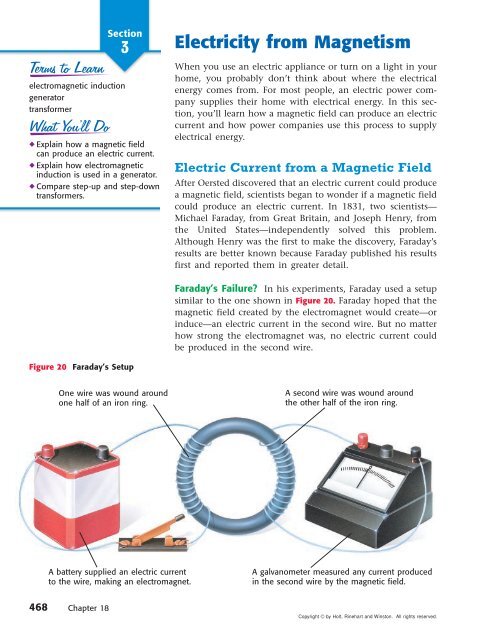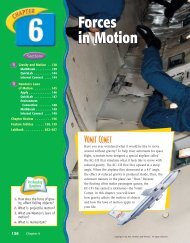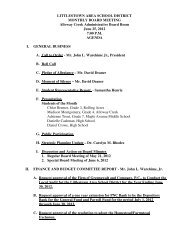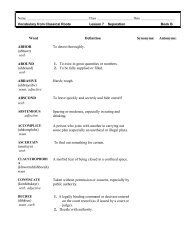Electromagnetism Electromagnetism
Electromagnetism Electromagnetism
Electromagnetism Electromagnetism
You also want an ePaper? Increase the reach of your titles
YUMPU automatically turns print PDFs into web optimized ePapers that Google loves.
Section<br />
3<br />
electromagnetic induction<br />
generator<br />
transformer<br />
◆ Explain how a magnetic field<br />
can produce an electric current.<br />
◆ Explain how electromagnetic<br />
induction is used in a generator.<br />
◆ Compare step-up and step-down<br />
transformers.<br />
Figure 20 Faraday’s Setup<br />
468<br />
One wire was wound around<br />
one half of an iron ring.<br />
A battery supplied an electric current<br />
to the wire, making an electromagnet.<br />
Chapter 18<br />
Electricity from Magnetism<br />
When you use an electric appliance or turn on a light in your<br />
home, you probably don’t think about where the electrical<br />
energy comes from. For most people, an electric power company<br />
supplies their home with electrical energy. In this section,<br />
you’ll learn how a magnetic field can produce an electric<br />
current and how power companies use this process to supply<br />
electrical energy.<br />
Electric Current from a Magnetic Field<br />
After Oersted discovered that an electric current could produce<br />
a magnetic field, scientists began to wonder if a magnetic field<br />
could produce an electric current. In 1831, two scientists—<br />
Michael Faraday, from Great Britain, and Joseph Henry, from<br />
the United States—independently solved this problem.<br />
Although Henry was the first to make the discovery, Faraday’s<br />
results are better known because Faraday published his results<br />
first and reported them in greater detail.<br />
Faraday’s Failure? In his experiments, Faraday used a setup<br />
similar to the one shown in Figure 20. Faraday hoped that the<br />
magnetic field created by the electromagnet would create—or<br />
induce—an electric current in the second wire. But no matter<br />
how strong the electromagnet was, no electric current could<br />
be produced in the second wire.<br />
A second wire was wound around<br />
the other half of the iron ring.<br />
A galvanometer measured any current produced<br />
in the second wire by the magnetic field.<br />
Copyright © by Holt, Rinehart and Winston. All rights reserved.





